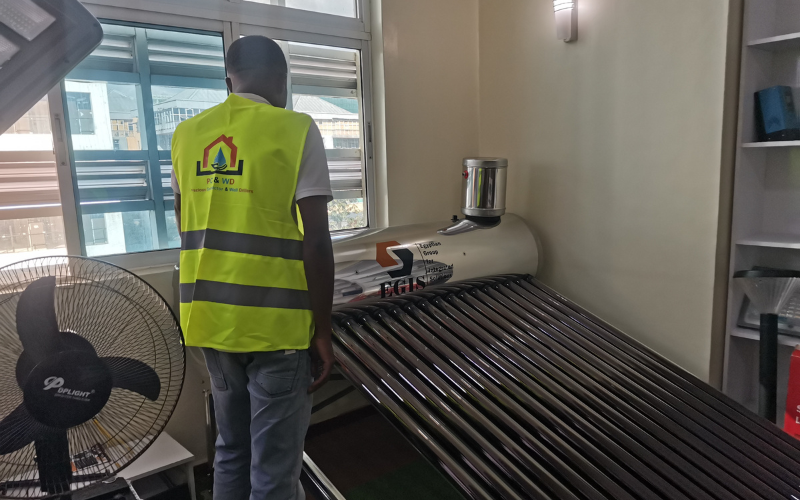Engineering is concerned with the development, improvement, and implementation of inte grated systems of people, money, knowledge, information, equipment, energy, materials, analysis and synthesis, as well as the mathematical, physical and social sciences together with the principles and methods of engineering design to specify, predict, and evaluate the results to be obtained from such systems or processes.

A home energy audit, also known as a home energy assessment, is a comprehensive evaluation of a home’s energy use and efficiency. The goal of a home energy audit is to identify areas where a home is losing energy and to recommend measures to improve energy efficiency, reduce energy consumption, and lower utility bills. Here’s a detailed look at what a home energy audit involves:
1. Purpose of a Home Energy Audit:
- Identify Energy Waste: Detect areas where energy is being wasted due to leaks, poor insulation, inefficient appliances, and other factors.
- Improve Comfort: Enhance indoor comfort by addressing issues such as drafts, inconsistent temperatures, and inadequate ventilation.
- Reduce Utility Bills: Provide recommendations to reduce energy consumption, which can lead to significant savings on utility bills.
- Environmental Impact: Decrease the home’s carbon footprint by reducing overall energy usage and increasing reliance on renewable energy sources.
2. Components of a Home Energy Audit:
- Preliminary Assessment:
- Homeowner Interview: The auditor typically starts by interviewing the homeowner to understand their energy use patterns, concerns, and past utility bills.
- Visual Inspection: A walk-through inspection of the home to check the condition of insulation, windows, doors, heating and cooling systems, lighting, and appliances.
- Blower Door Test:
- A blower door test measures the air tightness of the home. A powerful fan is mounted in an exterior door frame and used to depressurize the home, revealing air leaks around doors, windows, and other openings.
- Thermographic Inspection:
- Infrared cameras are used to detect heat loss and identify areas of inadequate insulation. This inspection can reveal hidden issues such as gaps in insulation and air leaks that are not visible to the naked eye.
- Ductwork Inspection:
- Examination of the home’s ductwork for leaks, poor insulation, or blockages that can reduce the efficiency of the heating and cooling system.
- Lighting and Appliances Assessment:
- Evaluation of the efficiency of lighting fixtures and household appliances. Recommendations may include upgrading to energy-efficient models or using energy-saving settings.
- Heating and Cooling System Evaluation:
- Analysis of the home’s heating and cooling systems to ensure they are operating efficiently. This includes checking the age, condition, and maintenance history of furnaces, air conditioners, and water heaters.
3. Benefits of a Home Energy Audit:
- Cost Savings: By implementing the recommended improvements, homeowners can significantly reduce their energy bills.
- Enhanced Comfort: Improved insulation, air sealing, and HVAC efficiency contribute to a more comfortable living environment.
- Increased Home Value: Energy-efficient homes are more attractive to buyers and can have a higher resale value.
- Health and Safety: Identifying and addressing issues such as poor ventilation, mold, or carbon monoxide leaks can improve indoor air quality and safety.
- Environmental Benefits: Reduced energy consumption leads to lower greenhouse gas emissions, contributing to environmental conservation.
4. Types of Home Energy Audits:
- Professional Energy Audit: Conducted by a certified energy auditor using specialized equipment and diagnostic tools to provide a thorough analysis and detailed report.
- DIY Energy Audit: Homeowners can perform a basic audit using checklists and guides available online. While not as comprehensive, it can still identify obvious issues and quick fixes.
5. Common Recommendations from a Home Energy Audit:
- Sealing Air Leaks: Caulking and weatherstripping around doors and windows, sealing gaps in ductwork, and adding door sweeps.
- Upgrading Insulation: Adding insulation to attics, walls, floors, and basements to reduce heat loss.
- Replacing Windows: Installing energy-efficient windows to reduce heat transfer.
- Upgrading HVAC Systems: Replacing old heating and cooling systems with more efficient models, and ensuring regular maintenance.
- Installing Programmable Thermostats: Using thermostats that can automatically adjust temperatures based on the homeowner’s schedule.
- Switching to Energy-Efficient Lighting: Replacing incandescent bulbs with LEDs or CFLs.
- Upgrading Appliances: Replacing old appliances with ENERGY STAR-rated models that consume less energy.
Conclusion: A home energy audit is a valuable tool for homeowners looking to improve their home’s energy efficiency, reduce utility bills, and enhance overall comfort. Whether conducted professionally or as a DIY project, an energy audit provides actionable insights that can lead to significant cost savings and environmental benefits. By identifying areas of energy waste and recommending targeted improvements, a home energy audit helps homeowners make informed decisions about energy upgrades and investments.
Home energy audit knowledgebase
he goal of a home energy audit is to identify areas where a home is losing energy and to recommend measures to improve energy efficiency, reduce energy consumption, and lower utility bills.
It's conducted by a certified energy auditor using specialized equipment and diagnostic tools to provide a thorough analysis and detailed report.

